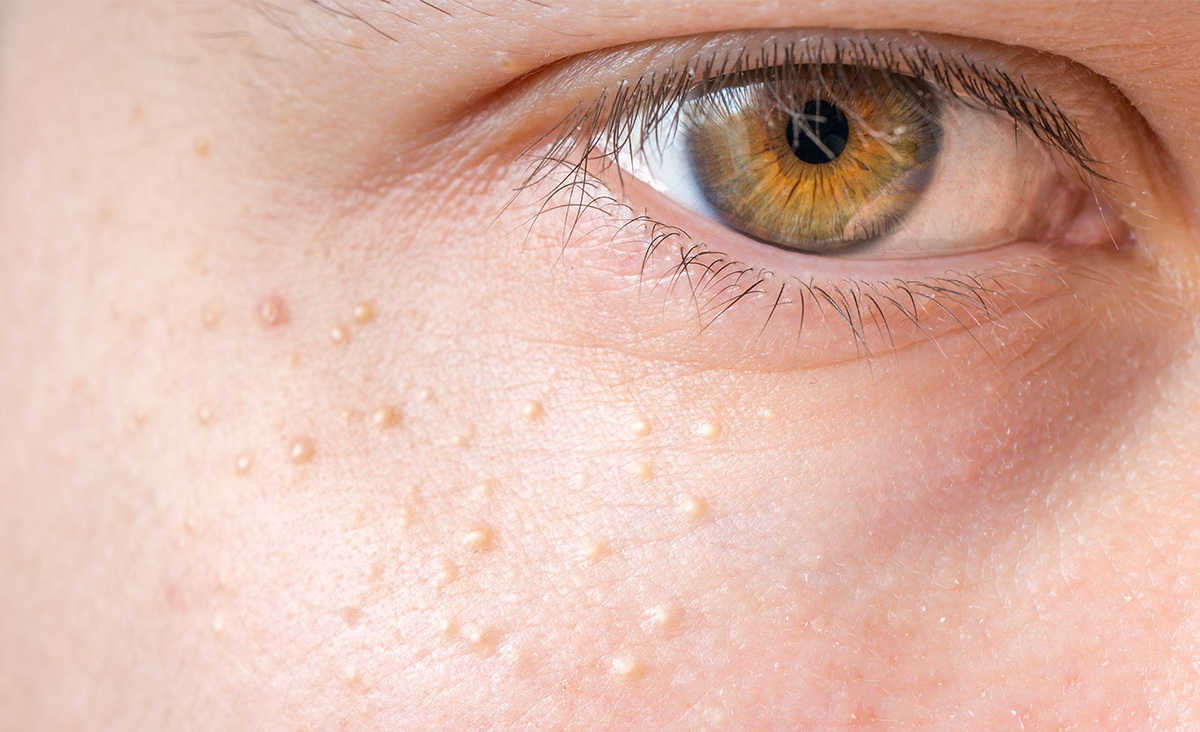Milia
Posted on
Any type of skin bump or discoloration can be surprising to many. If you’ve noticed tiny, white bumps mainly on your cheeks, nose or eyelids, you may be dealing with milia. Milia bumps are often mistaken for small white heads. The most common occurrences of milia arise from old skin cells that get trapped under new skin cells in the process of natural exfoliation. Over time, the old cells harden and form small cysts under the skin, causing you to notice these small bumps. Other types of milia can be caused from skin damage such as rashes, injuries or sun exposure, long term use of steroids, or genetic autoimmune conditions. People of all ages and skin types are at risk to get milia, but there are a few things that can increase your risk:
- Lack of proper hygiene and skincare
- Use of oil-based products or products that clog pores
- Lack of sleep
- Skin conditions such as dandruff or rosacea
Milia is not only common in adults, but also often in babies since their skin is still learning to naturally exfoliate dead skin cells. Treatment is generally different for adults compared to babies. Milia in babies will usually clear up on its own within a few days to weeks, but their faces should be cleaned with warm water and patted dry. Like babies, milia in adults may go away on its own, but if you are looking to speed up the process, at-home treatment like exfoliators, retinol or facial peels may help. Ask your doctor about your options prior to using home treatment as some products may not be recommended for your circumstance. If your milia does not clear up on its own or after home treatment, your doctor may be able to provide you with options to safely remove them.
